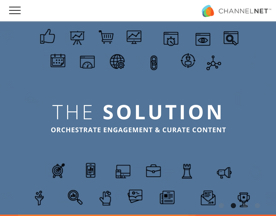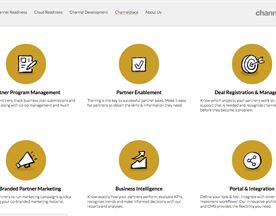What are the benefits and requirements of a channel partner program? Channel partner programs offer market expansion, sales boosts, and support. Requirements include commitment, brand alignment, and sales targets.
Channel partners are an integral part of many businesses’ growth and success. It is a company or individual that collaborates with a manufacturer or vendor to promote and sell their products or services. These partners can be resellers, distributors, system integrators, or other types of intermediaries.

Understanding channel partners involves recognizing the importance of these relationships and the role they play in expanding a company’s reach and customer base. Developing a channel partner strategy is crucial to identifying the right partners and establishing mutually beneficial relationships. This strategy should include identifying target markets, selecting appropriate partners, and creating a plan for managing and supporting these partnerships.
Key Takeaways
- Channel partners are crucial to many businesses’ growth and success.
- Developing a successful strategy is essential for identifying the right partners and establishing mutually beneficial relationships.
- Effective partner relationship management, marketing and sales enablement, and measuring success and impact are key components of a successful program.
Understanding Channel Partners
Channel partners are third-party entities that work with companies to sell their products or services. They play a crucial role in the sales and marketing of a company’s offerings. They can be resellers, distributors, value-added resellers (VARs), managed service providers (MSPs), consultants, system integrators, original equipment manufacturers (OEMs), independent software vendors (ISVs), or any other type of partner that helps a company sell its products or services.
Types of Channel Partners
There are many types of channel partners, each with their own unique characteristics and strengths. Resellers, for example, purchase products from a company and then sell them to their own customers. Distributors, on the other hand, typically purchase products in bulk from a company and then sell them to resellers or end-users.
VARs provide additional value to a company’s products by integrating them with other hardware or software to create a complete solution for their customers. MSPs offer ongoing management and support services for a company’s products, while consultants provide expert advice and guidance to help companies make the most of their offerings. System integrators, OEMs, and ISVs all provide specialized services that help companies sell their products or services more effectively.
The Role of Channel Partners in Sales and Marketing
Channel partners play a critical role in the sales and marketing of a company’s products or services. They help to extend a company’s reach into new markets and geographies, and they provide valuable expertise and support to their customers. By working with these channels, companies can leverage their partners’ existing relationships and expertise to reach new customers and drive sales.
These channels also help to reduce a company’s sales and marketing costs, since they typically have their own sales teams and marketing channels.
Benefits of Channel Partnerships
There are many benefits to working with channel partners. For one, the channels can help companies to reach new customers and markets that they might not otherwise be able to reach on their own. They can also provide valuable expertise and support to their customers, which can help to increase customer satisfaction and loyalty.
Additionally, they can help to reduce a company’s sales and marketing costs, since they typically have their own sales teams and marketing channels. Overall, channel partnerships can be a highly effective way for companies to grow their business and increase their sales and revenue.
To learn more about channel partners and the role they play in sales and marketing, check out this article from Salesforce, a leading provider of customer relationship management software.
Developing a Channel Partner Strategy
Developing a channel strategy is an essential step for companies looking to expand their market reach and increase sales. A well-crafted strategy can help identify the target market, create an ideal partner profile, and define a value proposition that resonates with partners.
Identifying Target Market
The first step in developing a channel partner strategy is to identify the target market. This involves analyzing the company’s current customer base and determining which segments are most profitable and have the most potential for growth. It also involves researching the competition and identifying gaps in the market that the company can fill.
Creating an Ideal Partner Profile
Once the target market has been identified, the next step is to create an ideal partner profile. This involves determining the characteristics and qualifications that the company is looking for in a partner. This can include factors such as geographic location, industry expertise, sales experience, and customer base.
Defining Value Proposition
The final step in developing a channel partner strategy is to define a value proposition that will attract partners. This involves identifying the benefits that partners will receive by partnering with the company, such as access to new markets, increased revenue, and marketing support. It also involves determining the resources and support that the company will provide to partners, such as training, sales tools, and technical support.
To learn more about developing a channel partner strategy, visit this resource for additional insights and best practices.
Channel Partner Programs and Ecosystem
Establishing Partner Programs
Channel partner programs are designed to create a mutually beneficial relationship between two companies. The goal of these programs is to increase revenue and market share by leveraging the strengths of each partner. To establish a successful partner program, it is important to have a clear understanding of the partner’s business objectives, target audience, and the benefits they can offer to the partnership.
Building a Partner Ecosystem
Building a partner ecosystem requires identifying and recruiting partners who can bring value to the program. This can be achieved by researching potential partners and identifying those whose products or services complement your own. Once potential partners are identified, it is important to establish a clear communication strategy and set expectations for the partnership.
Incentives and Rewards
Incentives and rewards are an important part of any channel partner program. These can include financial incentives such as commissions or bonuses, as well as non-financial incentives such as training and support. It is important to establish clear guidelines for incentives and rewards to ensure that partners are motivated to participate in the program and are rewarded for their efforts.
To learn more about channel partner programs and ecosystems, check out this resource.
Partner Relationship Management

Partner Relationship Management (PRM) is a crucial aspect of channel partner management. It involves managing the relationships between a company and its channel partners to ensure mutual success. Effective PRM requires a comprehensive strategy that covers all aspects of the partnership, from onboarding to ongoing communication and support.
Onboarding and Training
Successful partnerships start with effective onboarding and training programs. These programs should provide partners with the knowledge and tools they need to sell and support the company’s products or services. This includes training on product features, sales techniques, and customer support best practices. Regular training sessions and certifications can help partners stay up-to-date with the latest product updates and industry trends.
Communication and Support
Clear and consistent communication is essential for maintaining strong partner relationships. Companies should provide partners with regular updates on product releases, marketing campaigns, and other relevant information. This can be done through email newsletters, webinars, or other communication channels. In addition, companies should provide partners with access to dedicated support resources, such as a partner portal or help desk, to help them resolve customer issues quickly and efficiently.
Performance Metrics and KPIs
Performance metrics and key performance indicators (KPIs) are critical for measuring the success of a channel partner program. Companies should establish clear metrics and KPIs that align with their overall business goals and regularly track partner performance against these benchmarks. This can help identify areas for improvement and enable companies to make data-driven decisions about their partner program.
Overall, effective PRM requires a comprehensive strategy that covers all aspects of the partnership, from onboarding to ongoing communication and support. By investing in these areas and regularly measuring partner performance, companies can build strong, mutually beneficial relationships with their channel partners. For more information on PRM best practices, check out this link.
Marketing and Sales Enablement

Channel partners rely on their vendors to provide the necessary resources to successfully market and sell their products. This is where marketing and sales enablement comes in. By providing a range of marketing materials, co-marketing opportunities, and sales support, vendors can help their channel partners reach their full potential.
Providing Marketing Materials
Marketing materials are essential for channel partners to promote their products and services effectively. Vendors can provide their partners with a range of marketing collateral, including brochures, datasheets, case studies, and whitepapers. These materials help channel partners to educate their customers about the products and services they offer, and to differentiate themselves from their competitors.
To ensure that their partners have access to the latest and most relevant marketing materials, vendors should maintain a centralized repository of marketing collateral. This makes it easy for partners to find and download the materials they need, and ensures that they are always using the most up-to-date content.
Co-Marketing Opportunities
Co-marketing opportunities allow vendors and their channel partners to work together to promote their products and services. This can include joint marketing campaigns, co-branded collateral, and shared events. By pooling their resources, vendors and their partners can increase their reach and generate more leads.
To make the most of co-marketing opportunities, vendors should work closely with their partners to develop joint marketing plans. This should include clear objectives, target audiences, and messaging. By working together in this way, vendors and their partners can create more effective marketing campaigns that generate better results.
Sales Support and Lead Generation
In addition to marketing materials and co-marketing opportunities, vendors can provide their channel partners with sales support and lead generation services. This can include training on how to sell their products effectively, as well as access to sales tools and resources.
Vendors can also provide their partners with lead generation services, such as targeted marketing campaigns and lead nurturing programs. This helps channel partners to generate more leads and close more deals, ultimately driving revenue growth for both the vendor and their partners.
To make the most of these services, vendors should work closely with their partners to understand their specific needs and challenges. By tailoring their support and services to the individual needs of their partners, vendors can help them to succeed and grow their businesses.
Overall, marketing and sales enablement is a critical component of any successful channel partner program. By providing their partners with the resources and support they need to market and sell their products effectively, vendors can help them to achieve their goals and drive revenue growth. For more information on marketing and sales enablement, check out this resource.
Growth and Expansion

Channel partners are always looking for ways to grow and expand their business. This can be achieved through various means, including exploring new markets, forming strategic alliances and partnerships, and long-term success planning.
Exploring New Markets
One way to achieve growth and expansion is by exploring new markets. This involves identifying new customer segments and geographical locations where the company’s products or services can be sold. By doing so, channel partners can tap into new revenue streams and increase their customer base.
To successfully explore new markets, channel partners must conduct market research to understand the needs and preferences of potential customers. This can be done by analyzing market trends, conducting surveys, and gathering feedback from existing customers. By doing so, channel partners can tailor their products and services to meet the specific needs of the new market.
Strategic Alliances and Partnerships
Another way to achieve growth and expansion is by forming strategic alliances and partnerships. This involves collaborating with other companies to leverage each other’s strengths and resources. By doing so, channel partners can expand their product offerings, reach new customers, and increase their market share.
To form successful strategic alliances and partnerships, channel partners must identify companies that complement their strengths and share their values. They must also establish clear goals and expectations, and develop a plan for how they will work together. By doing so, channel partners can create a mutually beneficial relationship that will help them achieve their growth and expansion goals.
Long-Term Success Planning
Finally, channel partners must engage in long-term success planning to achieve sustainable growth and expansion. This involves developing a strategic plan that outlines the company’s vision, mission, and goals. By doing so, channel partners can ensure that they are aligned with their customers’ needs and are well-positioned to capitalize on emerging market trends.
To develop a successful long-term success plan, channel partners must identify their strengths, weaknesses, opportunities, and threats. They must also establish clear objectives, develop a roadmap for achieving their goals, and regularly review their progress. By doing so, channel partners can ensure that they are on track to achieve their growth and expansion goals.
In conclusion, channel partners can achieve growth and expansion by exploring new markets, forming strategic alliances and partnerships, and engaging in long-term success planning. By doing so, they can increase their revenue streams, expand their customer base, and achieve sustainable growth over the long term. For more information on channel partner growth and expansion strategies, please visit this resource.
Measuring Success and Impact

Channel partnerships can be a valuable tool for businesses to expand their reach and increase revenue. However, measuring the success and impact of these partnerships can be challenging. Here are a few key metrics to consider when evaluating the effectiveness of your channel partner program.
Revenue and Sales Metrics
One of the most obvious ways to measure the success of a channel partner program is through revenue and sales metrics. This includes tracking the number of leads generated, the percentage of leads that convert to sales, and the overall revenue generated through the partnership. It’s important to set clear goals and benchmarks for these metrics, and regularly evaluate whether your channel partner program is meeting those goals.
Customer Experience and Satisfaction
In addition to revenue and sales metrics, it’s important to consider the impact of your channel partner program on customer experience and satisfaction. This includes tracking metrics such as customer satisfaction scores, Net Promoter Score (NPS), and customer retention rates. A successful channel partner program should not only drive revenue, but also improve the overall customer experience and build trust with customers.
Return on Investment (ROI)
Finally, it’s important to consider the return on investment (ROI) of your channel partner program. This includes tracking the costs associated with the program (such as partner commissions, marketing materials, and training expenses) and comparing them to the revenue generated through the partnership. By calculating the ROI of your channel partner program, you can determine whether it is a worthwhile investment for your business.
Overall, measuring the success and impact of a channel partner program requires a careful balance of revenue, customer experience, and ROI metrics. By tracking these metrics and regularly evaluating the effectiveness of your program, you can ensure that your channel partnerships are driving growth and providing value to your business.
Here is a helpful resource for more information on measuring the success of a channel partner program.
Challenges and Considerations

Channel partner programs can be an effective way to expand a company’s reach and increase sales, but they also come with their own set of challenges and considerations. In this section, we will explore some of the key challenges that companies face when managing channel partner programs and the considerations that must be taken into account to ensure success.
Managing Compliance and Standards
One of the biggest challenges of managing a channel partner program is ensuring that partners comply with the company’s standards and regulations. This can be particularly challenging when dealing with partners in different countries or regions, as regulations may vary widely. Companies must ensure that their partners are aware of and adhere to all relevant regulations and standards, and that they have processes in place to monitor compliance.
To help ensure compliance, companies should consider providing training and resources to their partners, as well as establishing clear guidelines and expectations. Regular communication and feedback can also be helpful in ensuring that partners are meeting the company’s standards.
Balancing Direct and Indirect Sales
Another consideration when managing a channel partner program is balancing direct and indirect sales. Companies must decide how much emphasis to place on each channel and how to allocate resources accordingly. This can be a delicate balancing act, as too much emphasis on one channel can lead to neglect of the other.
To strike the right balance, companies should consider factors such as market demand, partner capabilities, and the company’s own resources and goals. Regular monitoring and analysis of sales data can also help companies adjust their strategy as needed.
Maintaining Brand Consistency
Maintaining brand consistency is another important consideration when managing a channel partner program. Companies must ensure that their partners are representing the brand in a way that is consistent with the company’s values and messaging. This can be challenging when dealing with partners who may have their own branding and messaging.
To maintain brand consistency, companies should establish clear guidelines and expectations for their partners, including guidelines for branding and messaging. Regular communication and feedback can also be helpful in ensuring that partners are representing the brand in a way that is consistent with the company’s values and messaging.
Overall, managing a channel partner program requires careful consideration of a number of factors, including compliance, sales channels, and brand consistency. By establishing clear guidelines and expectations, providing training and resources, and maintaining regular communication and feedback, companies can overcome these challenges and ensure the success of their channel partner program.
Here is a link to a report by Technavio that provides insights into the global channel partner programs market.
Frequently Asked Questions

What are the different types of channel partners?
Channel partners can come in various forms, including value-added resellers (VARs), systems integrators (SIs), original equipment manufacturers (OEMs), and distributors. Each type of partner has its own unique strengths and capabilities that can be leveraged to help businesses achieve their goals.
How do channel partner agreements typically work?
Channel partner agreements are contracts between a business and its partners that outline the terms of their relationship. These agreements typically cover topics such as pricing, marketing support, training, and sales targets. They also specify the rights and responsibilities of each party and provide a framework for resolving disputes.
What are the key components of a successful channel partner program?
A successful channel partner program requires careful planning and execution. Key components of such a program include clear communication, comprehensive training, effective marketing support, and incentives that align with partner goals. Additionally, it’s important to establish strong relationships with partners and to provide ongoing support to help them succeed.
In what ways do channel partners contribute to marketing efforts?
Channel partners can play a critical role in marketing efforts by leveraging their existing relationships and expertise to promote a business’s products or services. They can help increase brand awareness, generate leads, and drive sales. Additionally, partners can provide valuable feedback on marketing initiatives and help refine messaging to better resonate with customers.
What distinguishes a channel partner from a distributor?
While distributors and channel partners both play important roles in the supply chain, there are some key differences between the two. Distributors typically purchase products from manufacturers and sell them to end customers, while channel partners work more closely with manufacturers to provide value-added services such as customization, integration, and support.
Can you provide examples of companies that utilize channel partners effectively?
Many successful companies rely on channel partners to help them reach new markets and customers. For example, Microsoft has a robust network of channel partners that provide a range of services and solutions to customers around the world. Another example is Salesforce, which relies on channel partners to help promote and sell its cloud-based CRM software.
For more information on channel partner programs, check out this resource from Salesforce.






![Collective[i]](https://www.serchen.com/images/thumbnails/large/61147.jpg)








